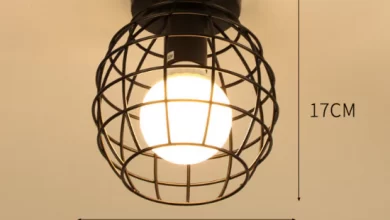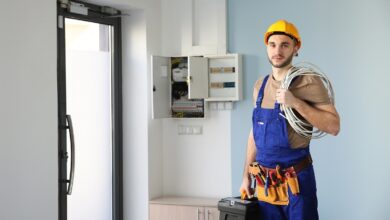Understanding the VW Bug Bus Narrowed Beam: A Comprehensive Guide
The Volkswagen Bug, affectionately known as the Beetle, and its larger sibling, the VW Bus, are iconic symbols of automotive history. These classic vehicles, loved for their unique charm and nostalgic appeal, have a dedicated following among car enthusiasts. One of the most popular modifications for these vehicles is the installation of a narrowed beam. In this comprehensive guide, we delve into the intricacies of the VW Bug Bus narrowed beam, exploring its benefits, installation process, and everything in between.
What is a Narrowed Beam?
A narrowed beam refers to a modification of the front suspension beam on VW Bugs and Buses. The purpose of this alteration is to narrow the front track width of the vehicle, providing a variety of aesthetic and functional benefits. This process involves shortening the front axle beam, which in turn pulls the wheels closer together.
Benefits of a Narrowed Beam
1. Improved Aesthetics:
- Narrowing the beam gives the VW Bug or Bus a sleek, tucked-in look, enhancing its classic appeal.
- The modification allows for a more aggressive stance, especially when paired with wider rear wheels.
2. Enhanced Handling:
- A narrower track width can improve the vehicle’s handling characteristics, making it more agile.
- Reducing the beam width can help minimize understeer, providing a more responsive driving experience.
3. Better Fitment for Larger Wheels:
- Narrowing the beam creates additional space in the wheel wells, accommodating larger and wider wheels without the risk of rubbing.
- This modification is particularly popular among enthusiasts looking to install custom wheels and tires.
Types of Narrowed Beams
There are various types of narrowed beams available, each designed to suit different needs and preferences. Understanding the differences can help you make an informed decision.
Adjustable Narrowed Beams
Adjustable narrowed beams allow for the adjustment of ride height. This type is ideal for those who want the flexibility to fine-tune their vehicle’s stance and handling characteristics.
Non-Adjustable Narrowed Beams
Non-adjustable narrowed beams offer a fixed ride height. These beams are generally simpler in design and installation, making them a good choice for those who prefer a straightforward setup.
Custom Narrowed Beams
Custom narrowed beams are tailored to specific requirements, offering the ultimate in personalization. Whether you need a specific width or want to incorporate unique design elements, custom beams provide a bespoke solution.
Choosing the Right Narrowed Beam
Selecting the appropriate narrowed beam for your VW Bug or Bus involves considering several factors, including your driving style, desired aesthetics, and technical requirements.
Width Reduction
The extent of the narrowing is a critical factor. Common options include:
- 2-inch narrowed beams: Offer a subtle change, retaining much of the original handling characteristics.
- 4-inch narrowed beams: Provide a more noticeable change in appearance and handling.
- 6-inch narrowed beams: Offer a dramatic transformation, ideal for show cars and those seeking a distinctive look.
Suspension Compatibility
Ensure the narrowed beam is compatible with your vehicle’s existing suspension components. Compatibility with shock absorbers, torsion leaves, and other elements is crucial for optimal performance and safety.
Quality and Brand
Opt for beams from reputable manufacturers known for their quality and durability. Researching customer reviews and seeking recommendations from the VW community can help you make an informed choice.
Installation Process
Installing a narrowed beam requires a certain level of mechanical skill and the right tools. While some enthusiasts prefer to undertake the installation themselves, others may choose to enlist the help of a professional mechanic.
Preparation
Tools and Materials Needed:
- Jack and jack stands
- Wrenches and sockets
- Screwdrivers
- Measuring tape
- Marker or chalk
- Replacement narrowed beam
- New bushings and seals (recommended)
- Anti-seize compound
Step-by-Step Installation
1. Lift the Vehicle:
- Use a jack to lift the front end of the vehicle and secure it with jack stands.
2. Remove the Front Wheels:
- Remove the lug nuts and take off the front wheels to access the suspension components.
3. Disconnect Steering and Suspension:
- Detach the tie rods, sway bar, and shock absorbers from the front beam.
- Remove the brake lines and ensure they are safely out of the way.
4. Remove the Existing Beam:
- Unbolt the front beam from the chassis and carefully remove it from the vehicle.
- Take note of the mounting points and any shims or spacers used.
5. Prepare the New Narrowed Beam:
- Inspect the new beam and install any necessary bushings and seals.
- Apply anti-seize compound to the mounting bolts and threads.
6. Install the New Beam:
- Position the narrowed beam in place and secure it to the chassis using the original mounting points.
- Reattach the steering and suspension components, ensuring proper alignment and torque specifications.
7. Reconnect the Brake Lines and Wheels:
- Reattach the brake lines, ensuring there are no leaks or kinks.
- Install the front wheels and secure the lug nuts.
8. Lower the Vehicle and Test:
- Carefully lower the vehicle and perform a test drive to ensure everything is functioning correctly.
- Check for any unusual noises or handling issues and make adjustments as necessary.
Maintenance and Care
Maintaining your narrowed beam is essential for ensuring longevity and performance. Regular inspections and proper care can help prevent issues and keep your VW Bug or Bus in top condition.
Regular Inspections
1. Check for Wear and Tear:
- Regularly inspect the narrowed beam and suspension components for signs of wear, such as cracks, rust, or loosened bolts.
- Pay close attention to bushings and seals, replacing them as needed.
2. Monitor Alignment:
- Ensure the front alignment is within specifications to prevent uneven tire wear and handling issues.
- Consider professional alignment services after installation or if you notice any handling irregularities.
Lubrication
1. Grease Points:
- Regularly lubricate grease points on the narrowed beam to prevent friction and wear.
- Use high-quality grease suitable for automotive suspension components.
2. Inspect Shocks and Struts:
- Check the condition of shock absorbers and struts, replacing them if they show signs of leakage or reduced performance.
Conclusion
A narrowed beam is a popular and impactful modification for VW Bugs and Buses, offering both aesthetic and performance benefits. Whether you’re looking to enhance the look of your classic VW or improve its handling, a narrowed beam is a worthwhile investment. By choosing the right beam, performing a careful installation, and maintaining it properly, you can enjoy the full benefits of this modification.
Read More: How to Select the Best Car Key Maker


